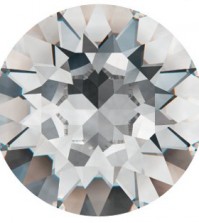- NEW DVD Series – Stone Setting with Bezels
- Tube Set Charm by Kim St. Jean
- Prong Basket Pendant by Kim St. Jean
- NEW DVD Series – Stone Setting with Cold Connections
- New DVD Series – Stone Setting with Wire
- NEW DVD Series: Introduction to Stone Setting by Kim St. Jean
- Featured Tool: Bracelet Bending Plier
- NEW Dvd by Eva Sherman
- Fun, Fast Fold Forming DVD Series
- Double Band Ear Cuff from Alex Simkin
Daily Wire Tip Jan. 4: About Lucky Stone CZs
Daily Wire Jewelry Making Tip for
January 4, 2011
Question:
Hello Dale, I make lots of rings using 8x10mm oval, 8mm round, and 10mm round stones. The new multi-colored CZs that were offered on the Daily Deal have an 8×10 concave cut. Does that mean it has no culet? Are they a good cut to use for rings in order to get the best fire or light for brilliance?
-Kaye in Richmond, Virginia
Answer:
Hi Kaye, “concave cut” means that the pavilion of the stone has been faceted using concave cuts. These are smooth round dips into the stone that join together at their sides, rather than regular facets that are most often triangular but flat cuts. Think of a scalloped edge, this is concave.
And yes, all of the stones have culets; some are just elongated. Due to the way light is broken up and reflected through concave cuts, they really make the colors in these stones jump! These Lucky CZs will make lovely and unusual rings.
Answer contributed by Dale “Cougar” Armstrong
Have a Question? Click Here to Submit Your Question
Click to Receive Daily Tips by Email





















Mary
January 4, 2011 at 9:03 am
I can’t wait for the cz stones I ordered to get here!! I managed to snag an assortment of styles and sizes and am eagerly awaiting their arrival so I can start designing with them.
Nina Christen
January 4, 2011 at 12:21 pm
I am waiting on the beautiful CZ’s to arrive. I ordered baguettes and don’t know how to use them. Are there settings designed to use with them? This style of stone is not familiar to me and I would appreciate any advice on how to set them.
Thanks
dalecgr
January 4, 2011 at 5:16 pm
Hi Nina, when used with gemstones the term ‘baguette’ simply means a long rectangular shape. You would use this shape in any wire design where you would normally use a rectangular or even square stone; pendants, rings, earrings, the center of a bracelet or neckpiece . . .
Pingback: More About Multicolored CZs | Jewelry Making Instructions